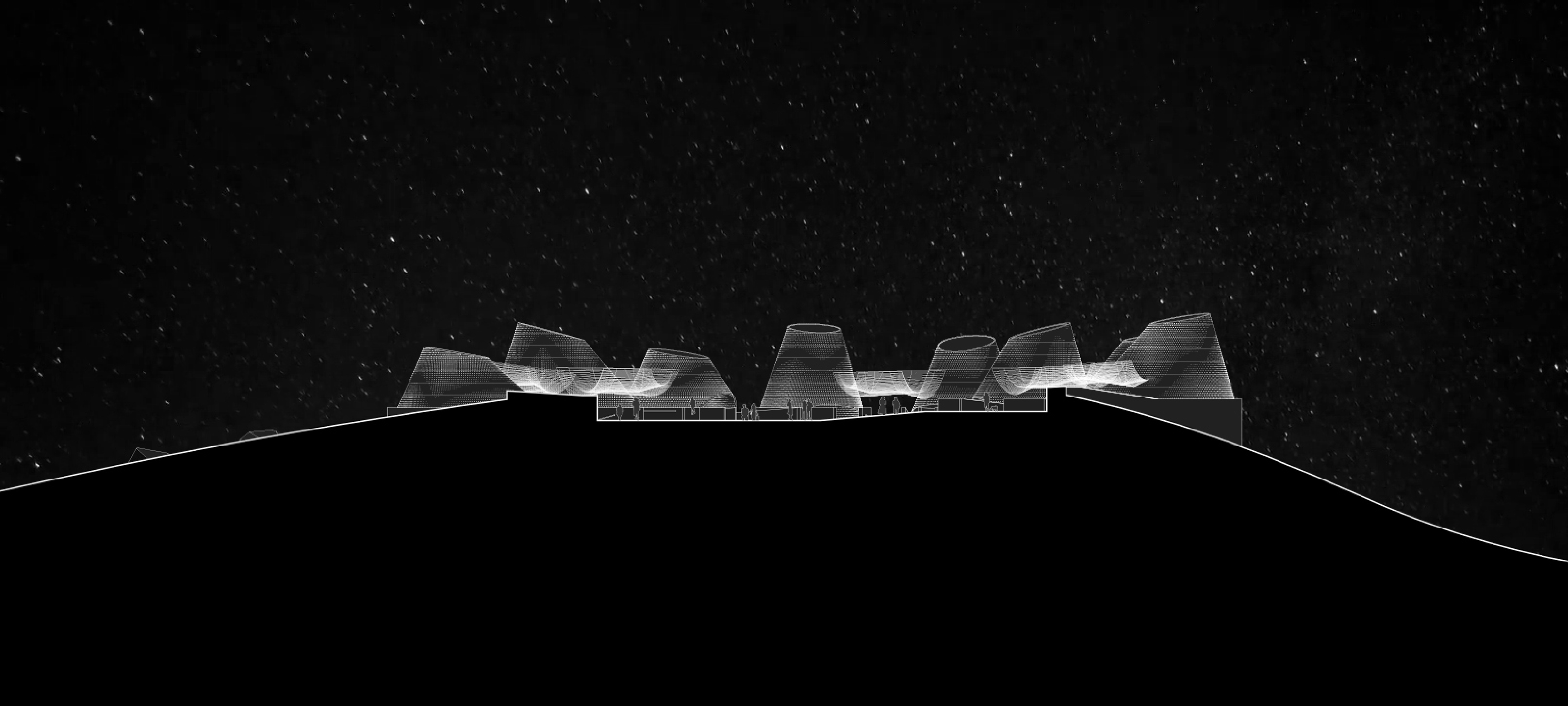


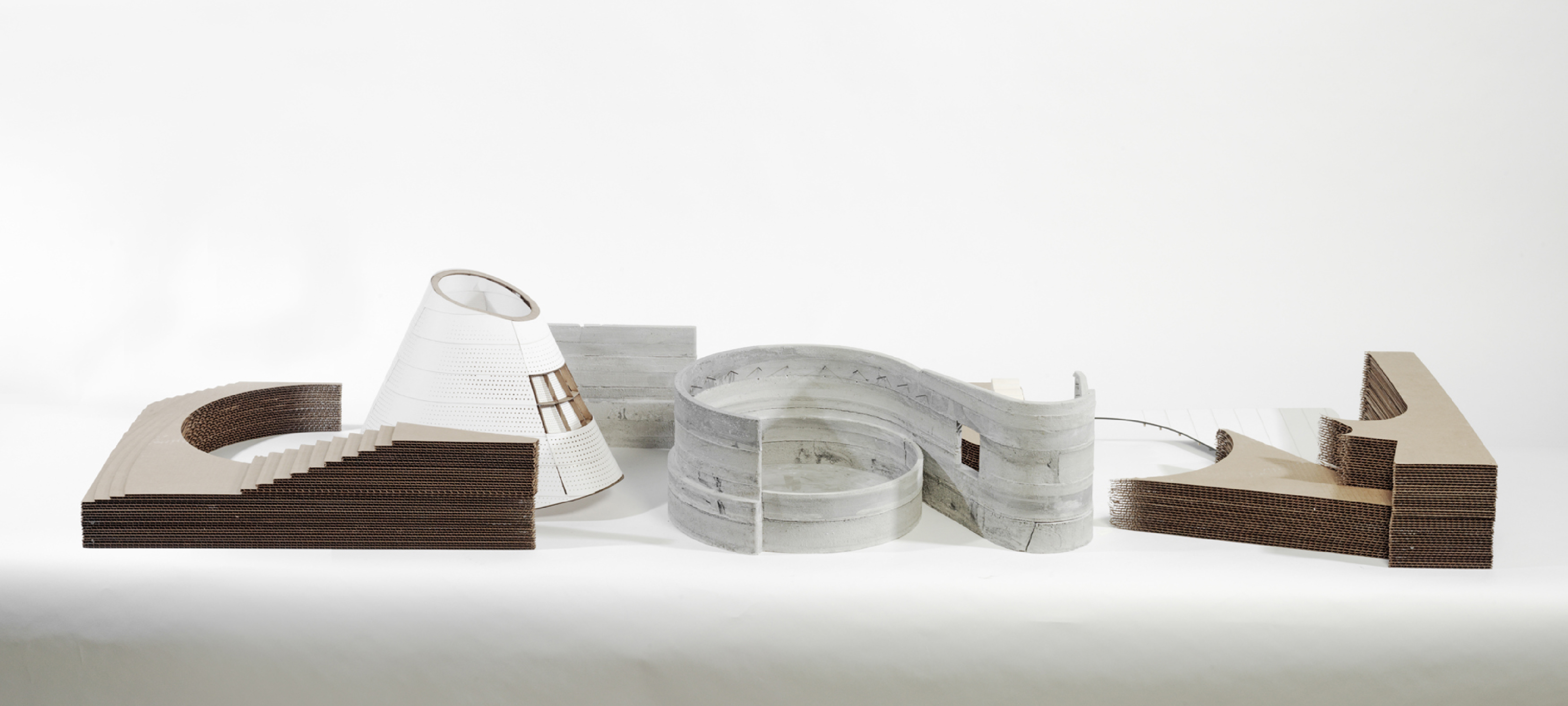
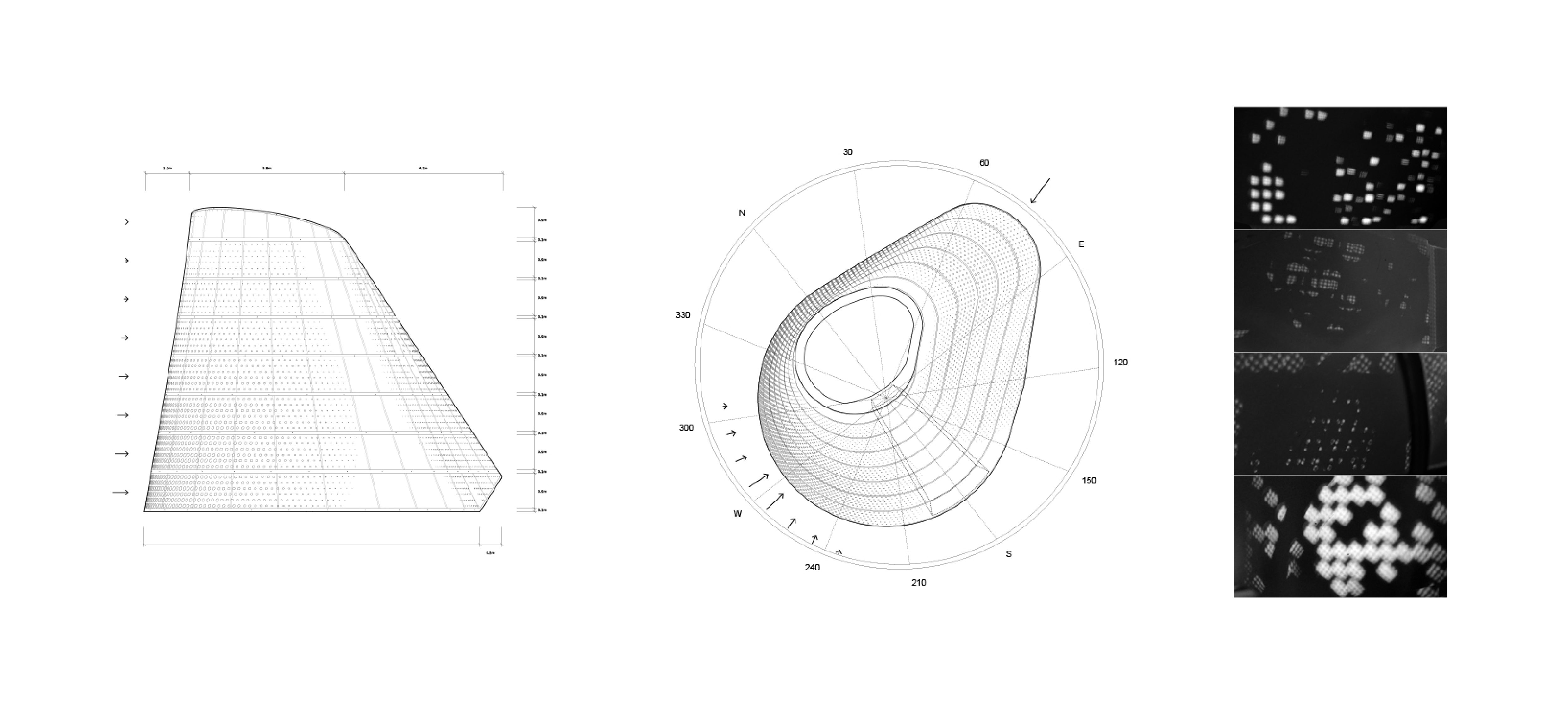
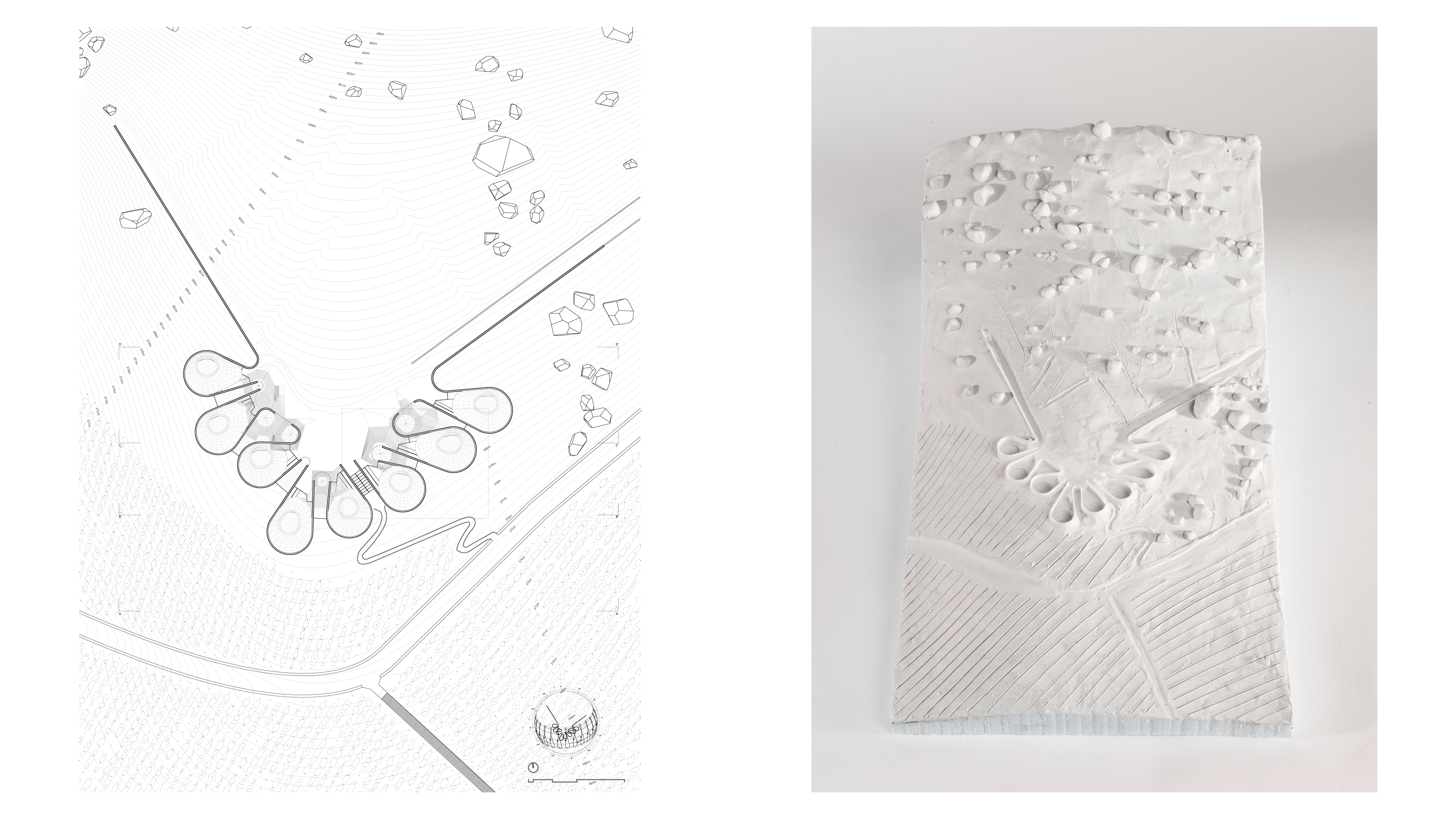
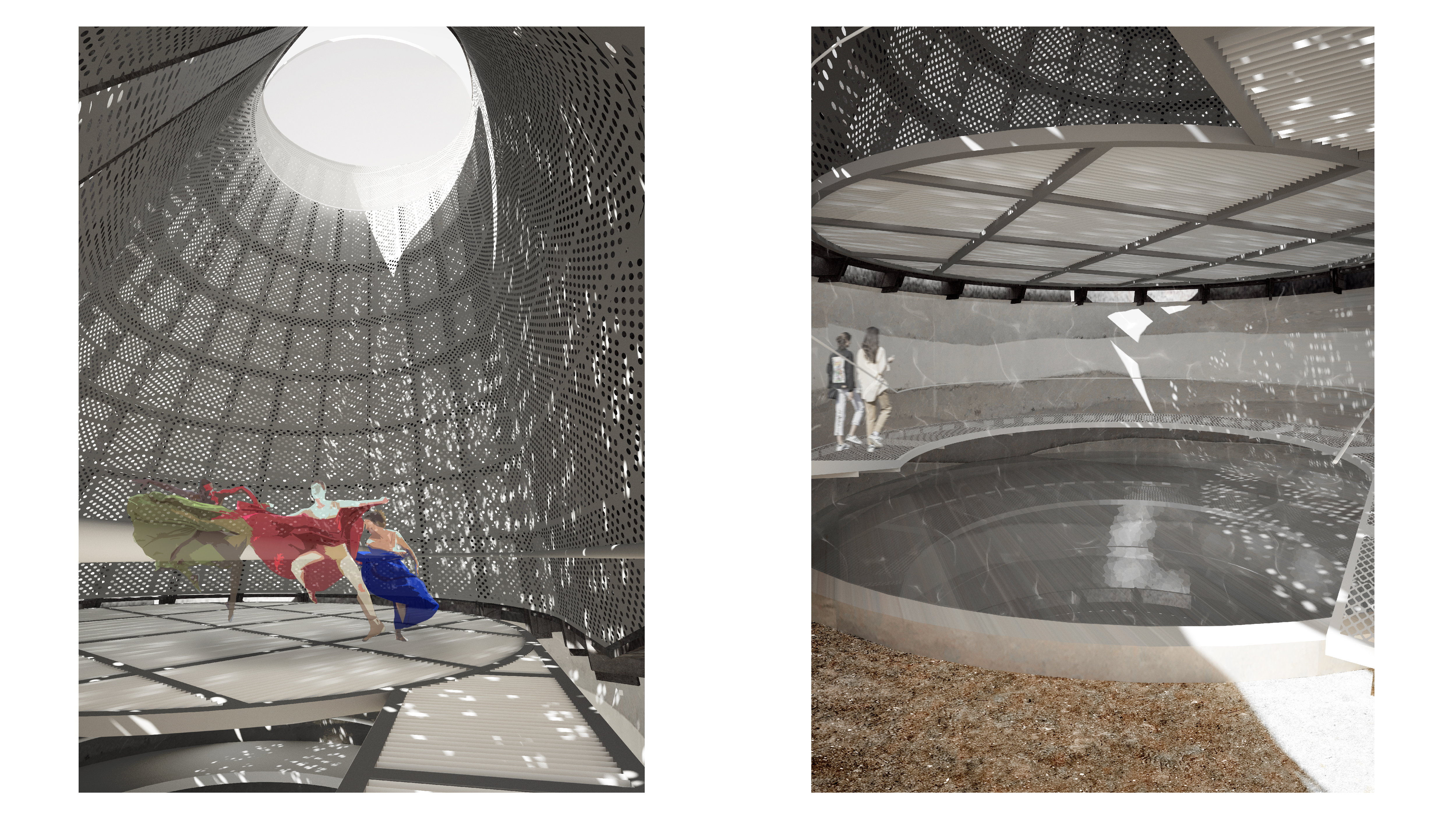
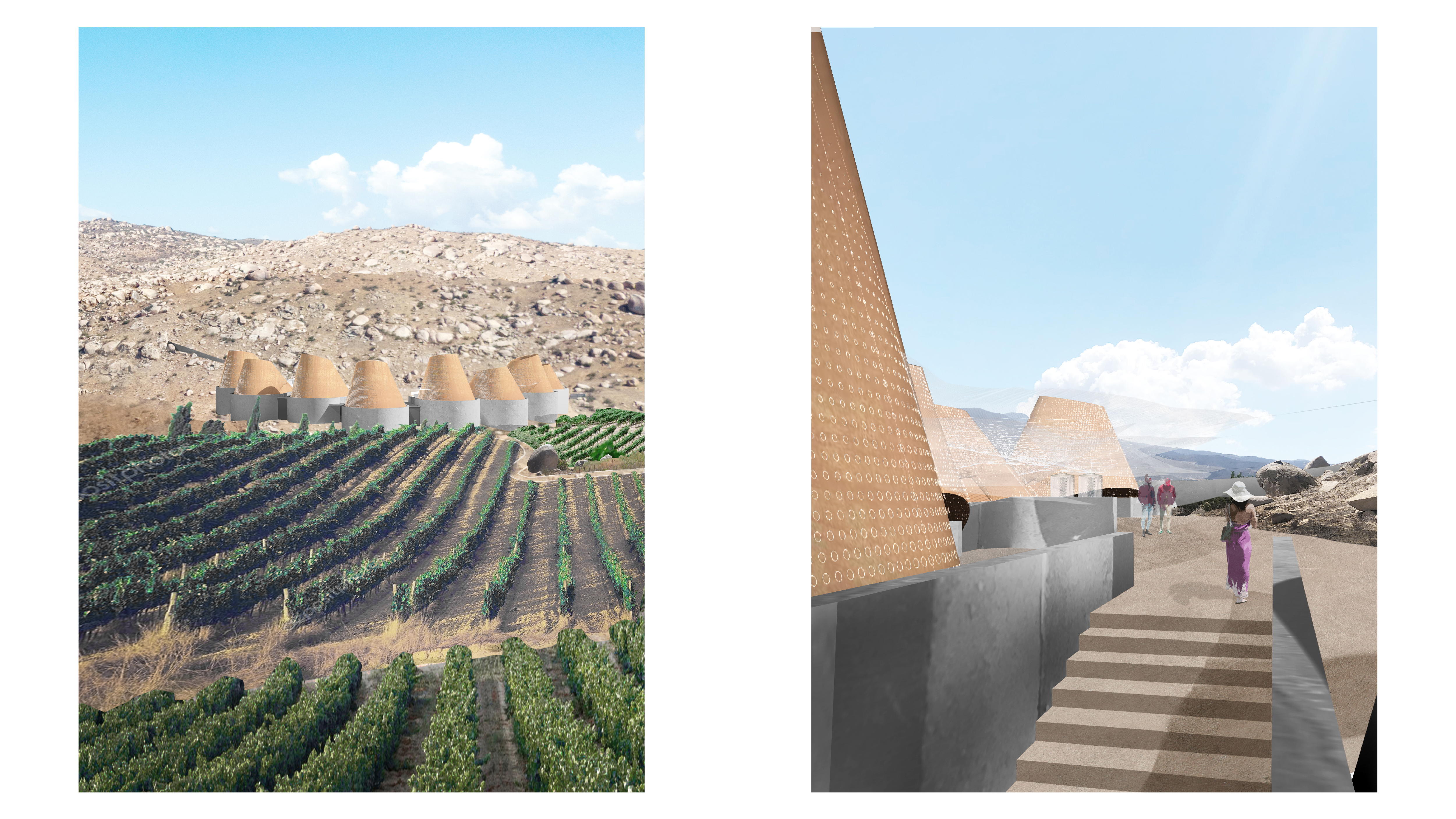
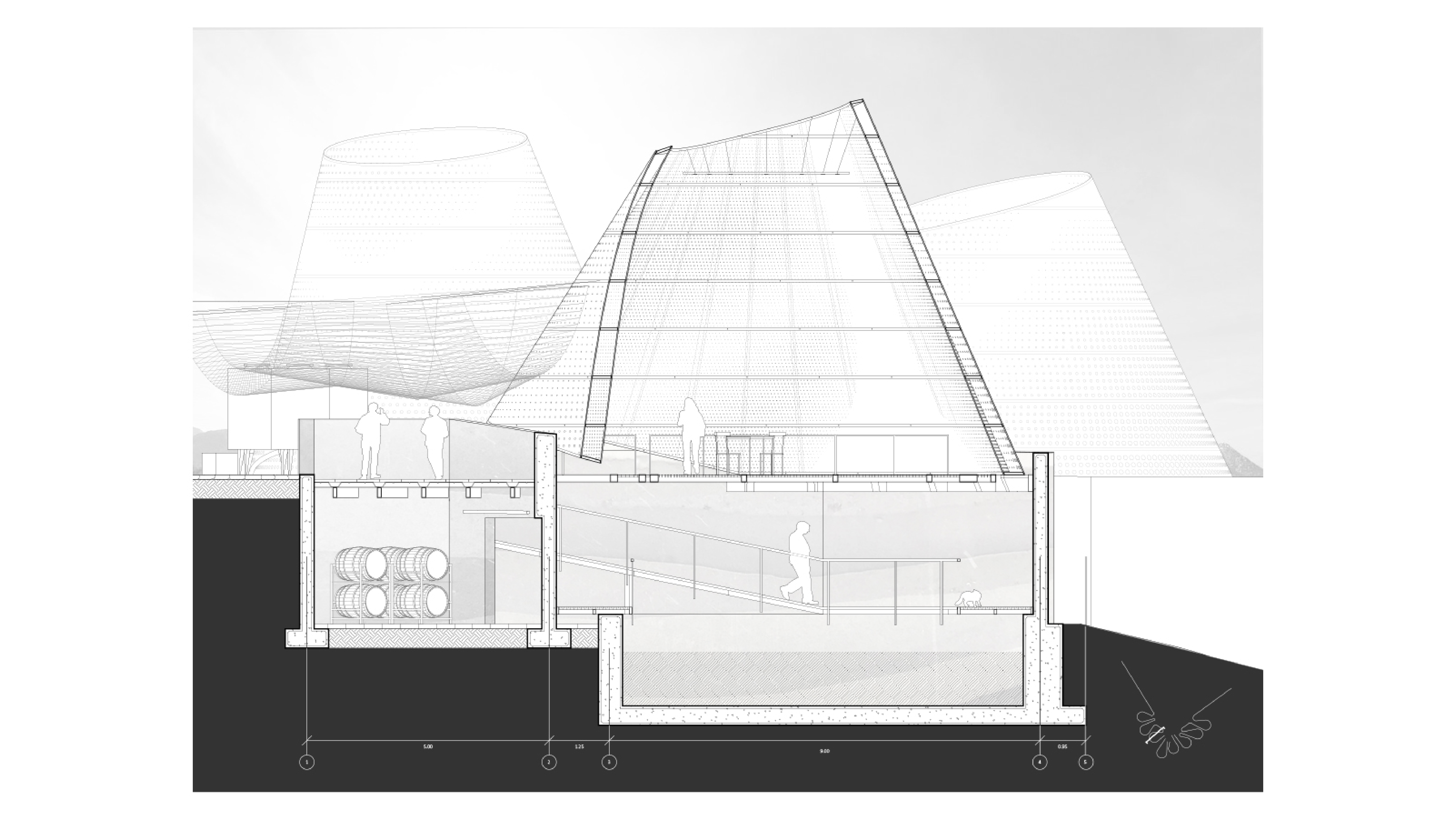

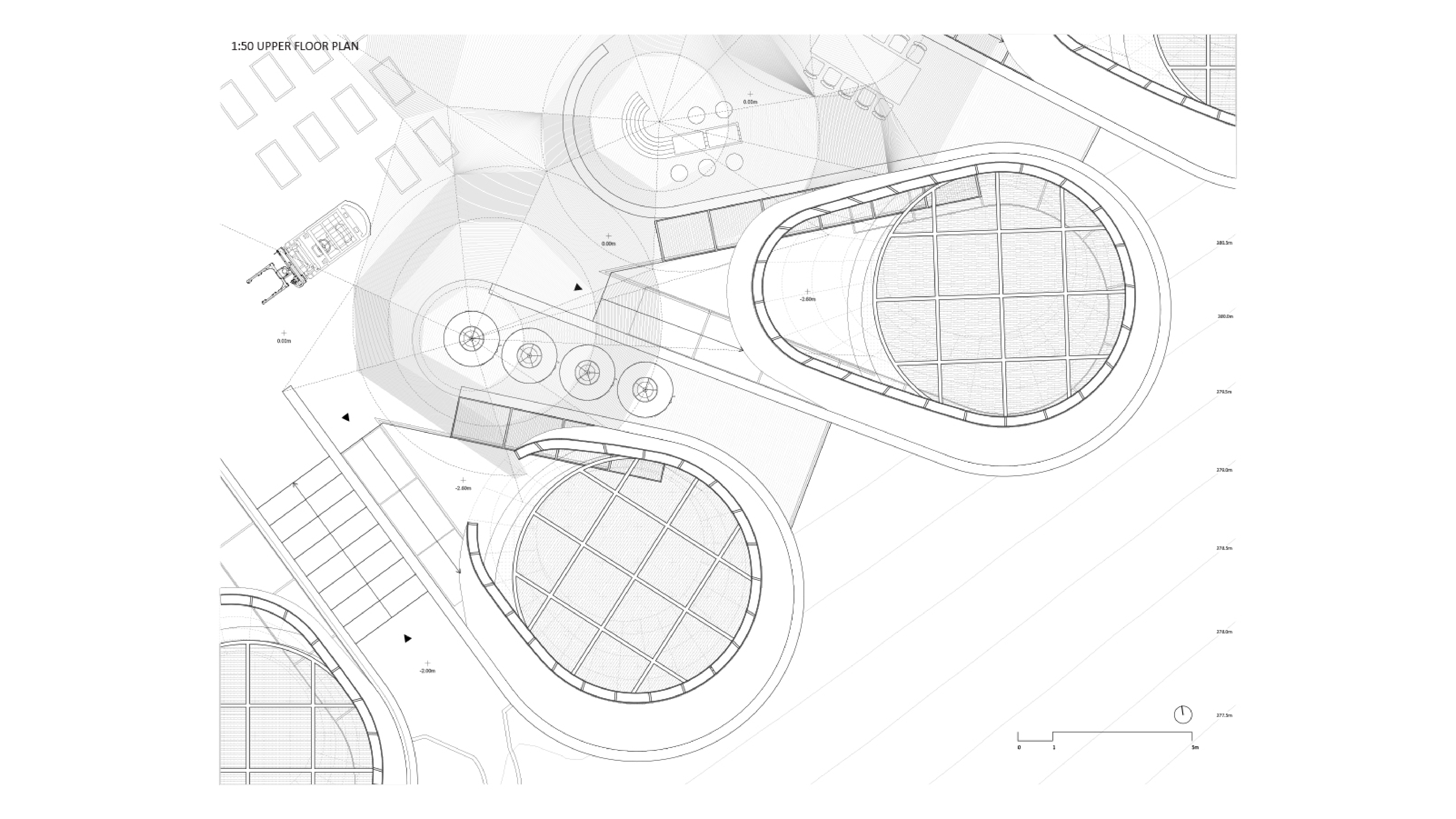
BAJA WINERY
Many of the wineries in Baja operate through extractive process rather than sustainable operation. The wineries have a business model that relies on excessive water collecting, soil usage, and successful marketing to sell more wine. Even though the winery advances with technology, the winery will not be sustainable if they keep the same model in the region.
In my project, the approach was to make a cooperative winery that can react flexibly to the climatic and economic shifts. Winery will evolve, change, and even dismantle in this frame. This project takes an infrastructural approach where wind and water are the essential climatic engine around which all else is constructed. The retaining walls redirect, collect, and hold water and upon its foundation walls become a structure for the lighter and temporal steel structure.
Eight cisterns in the site also become the climatic foundation of a winery. They allow a shift from centralized single ownership to cooperative ownership. The in-between spaces created from undulating layout becomes the shared barrel aging space on the below level and a social gathering space on the plaza level. The flattened center plaza becomes a gathering place for cooking classes and larger events.
Furthermore, the project suggests that the passive climate engine can itself become an experiential engine. While wineries in Baja take a business model which sells relatively cheap wines in a large quantity, a shift from consumption economy to experience economy is desired. Rather than implying sustainability as only a technical matter, one needs to see it as a driver for a new spatiality and experience of spaces.
Using a collected water body in the cistern below and a calibrated lightweight steel structure covering the water will create a micro climatic zone, allowing a shift from mechanical to climatic engine in the winery. Prevailing wind from the west blows through the perforated metal cladding and provides wind inside. South facing part of the hat becomes opaque without perforation to create air flow, exhausting hot air to the top of the structure.
Perforation and an accumulated appearance produced by the climate mediator control the light coming in and the water body creates reflective caustic effect inside the space. As you approach from the road you will see different images of the winery through day and night, and the central area will change continuously according to the shadow play during the day and illumination inside the lightweight structure will create an accumulated atmosphere.
Location: Baja, California, Mexico
Year: 2018
Type: Cultural, Industrial
Size: 16,200 SF
Status: Concept Design